- Stylish design inside and out
- Interior space and design
- Great infotainment system
- So-so performance and economy
- Sub par interior quality
- Gearknob can feel a little awkward
Ever since the death of the Hyundai Elantra in Australia those wanting a Sedan on the smaller side haven’t had much choice. Hyundai know this and replaced the Elantra with the new 2021 Hyundai i30 sedan. Offered in a selection of variants, the i30 sedan shows a new design language for the brand with swooping curves and sharp angles. There is now also more sporty Hyundai i30 N Line and N Line Premium in the range, widening the appeal for this illustrious sedan.
The small sedan market in Australia is coming to a demise with most models now just offering hatchback variants. We have seen the death of the Volkswagen Jetta, Holden Astra and Mitsubishi Lancer, as well as the Renault Megane sedan, Ford Focus sedan and – most recently – the Honda Civic sedan as well. The only sedan models that remain are the Kia Cerato, Toyota Corolla, Mazda 3 and now the 2021 Hyundai i30 sedan.
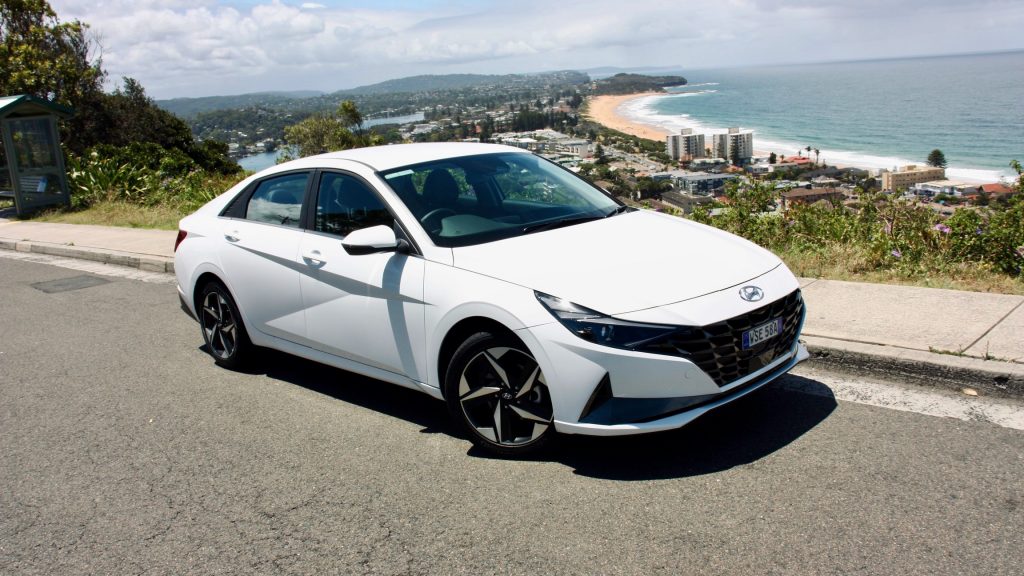
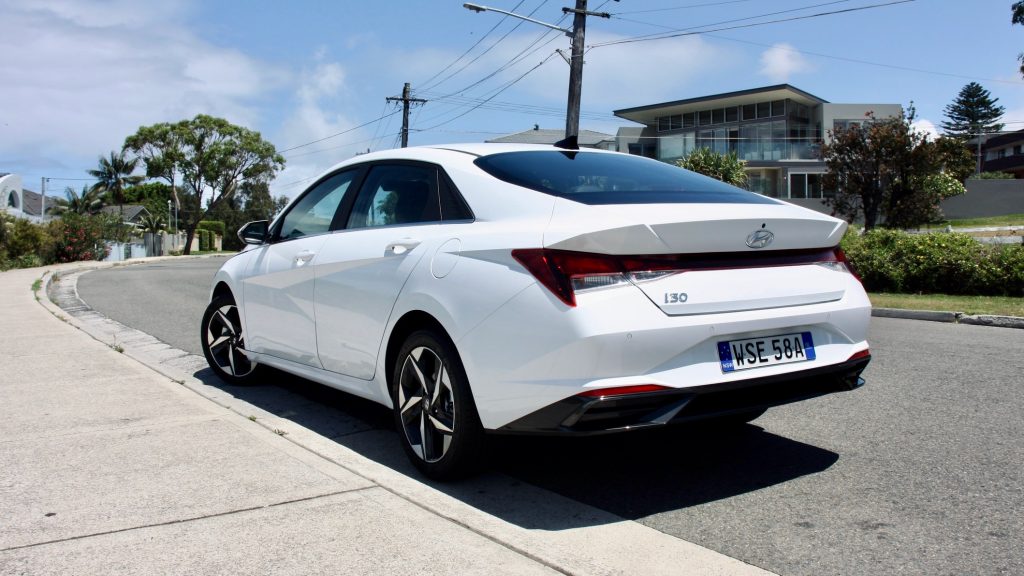
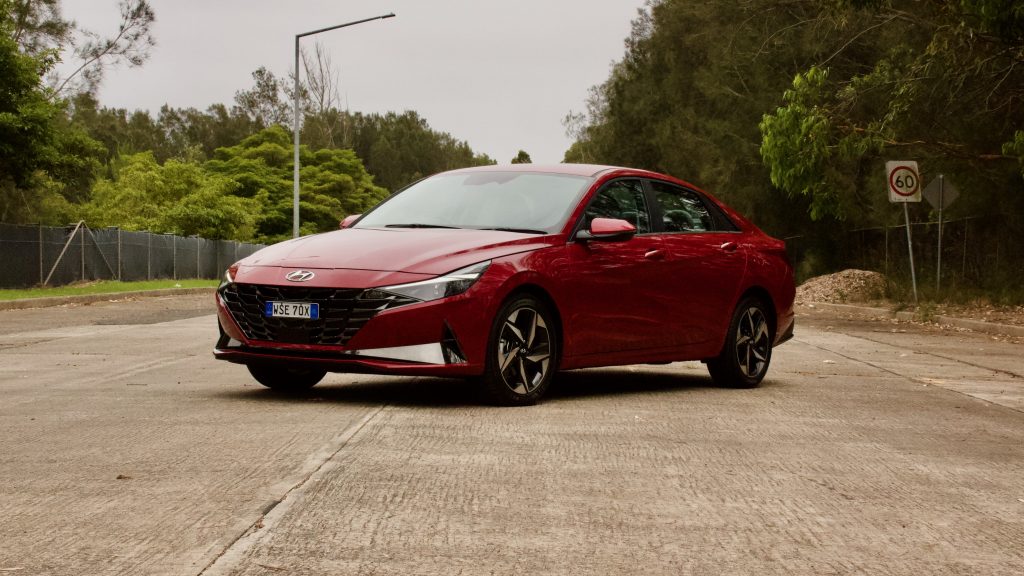
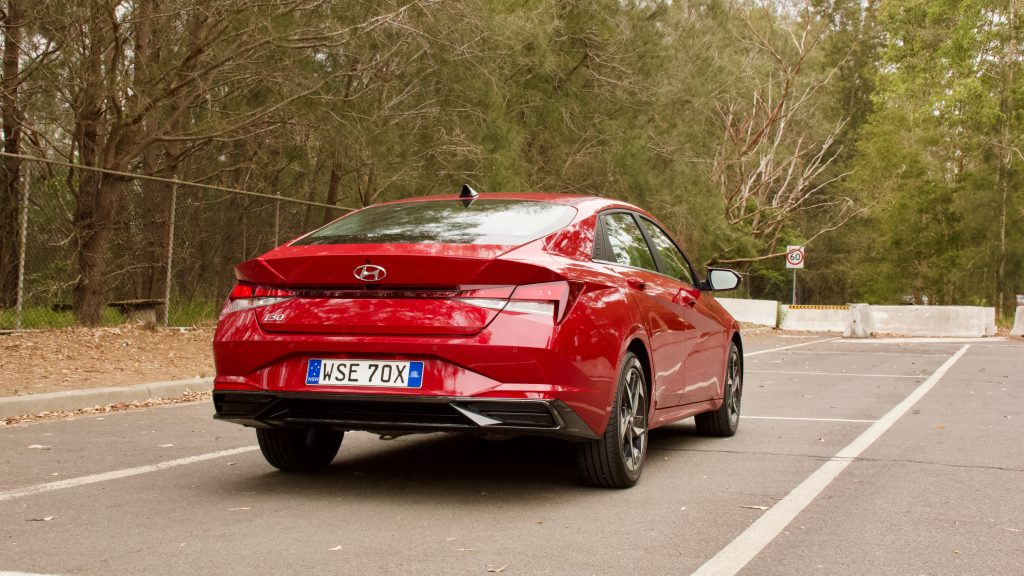
Price & Specs: 7/10
The entire Hyundai i30 range is well equipped with mostly every feature offered on passenger cars available to the i30. While the i30 Hatch starts off with the ‘i30’ model, the sedan is only offered from the second-tier Active and upwards. The 2021 Hyundai i30 Sedan range kicks off with the i30 Active sedan which starts from $25,190 plus on-road costs for the manual and $27,190 for the automatic.
Standard equipment on the Hyundai i30 Active sedan includes 17-inch alloy wheels with a full-size alloy spare wheel, an 8.0-inch touchscreen, wireless Apple CarPlay and Android Auto, a six-speaker sound system, an electronic parking brake, heated mirrors, automatic halogen projector headlights with LED daytime running lights, leather upholstery and a leather steering wheel and gear knob.
Standard safety features on the 2021 Hyundai i30 sedan include low and high speed autonomous emergency braking (AEB) with pedestrian and cyclist detection, lane departure warning, lane keep assist, forward collision alert, driver attention detection, rear parking sensors with a rear view camera, an alarm, tyre pressure warning, lane follow assist, six airbags, automatic high beam and for automatic models, adaptive cruise control.
The Hyundai i30 Elite sedan is automatic only and comes at a price of $31,190 plus on-road costs – a $4,000 increase over the automatic i30 Active. For the extra money, the i30 Elite adds a larger 10.25-inch touchscreen with wired (not wireless like the Active) Apple CarPlay and Android Auto, satellite navigation, live traffic updates, digital radio, a 10.25-inch digital driver’s display, an eight-speaker Bose audio system, keyless entry with push button start, rear AEB, white leather upholstery, auto-folding mirrors, ambient lighting, remote start, dual-zone automatic climate control, blind-spot monitoring, rear cross traffic alert, a wireless smartphone charger and rain-sensing wipers.
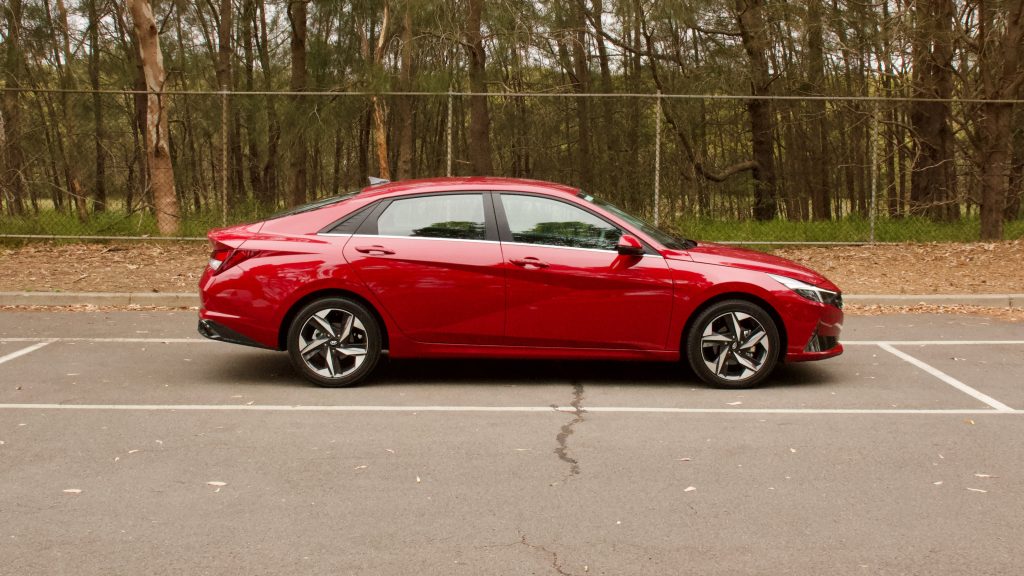
This is quite a lot of equipment for a modest $4,000 increase, although the Mazda 3 G25 Evolve sedan fitted with an automatic transmission costs exactly the same and comes with larger 18-inch alloy wheels, an extra airbag for the drivers knee, all-LED exterior lighting, a heads-up display (HUD) and road sign recognition. Although the i30 Elite has leather upholstery, an alarm system, a full-size spare wheel, LED daytime running lights, heated exterior mirrors, a fully digital driver’s display, ambient lighting and remote vehicle start over the Mazda3.
Our 2021 Hyundai i30 Active Sedan test car was painted in ‘Polar White’, which is the only standard colour offered on the i30 Sedan range – our i30 Elite test car was painted in ‘Fiery Red’ which comes at an additional $495 cost. Other colours that also come at the further cost are ‘Phantom Black’, ‘Intense Blue’, ‘Amazon Grey’ and ‘Fluid Metal’.
Performance & Economy: 7/10
The Active and Elite variants of the 2021 Hyundai i30 Sedan range come with the brand’s new ‘Smartstream’ 2.0-litre naturally aspirated four-cylinder engine, which is lightly updated compared with the previous ‘Nu’ engine that’s still offered in the i30 hatchback.
The 2.0-litre engine produces 117kW of power and 191Nm of torque. Peak power comes in from 6,200rpm and peak torque is served from 4,500rpm, which is still quite high in comparison with turbocharged lower capacity engines. These outputs are relatively subdued for the segment but the engine itself can be best described as adequate. It is more than enough for most people, though there is nothing special about it. It is quite vocal when accelerating and a little dull, but as we said for most people getting around town this engine is more than enough.
The transmission options for the 2021 Hyundai i30 Sedan is a standard six-speed manual (only available on the Active) and a six-speed torque converter automatic. Both of our i30 Sedan test cars were fitted with the latter and while it was a little slow to react at times, it shifted smoothly and there was no lurch when taking off. The transmission does what it’s told with no fuss, which is exactly what you want in this segment.
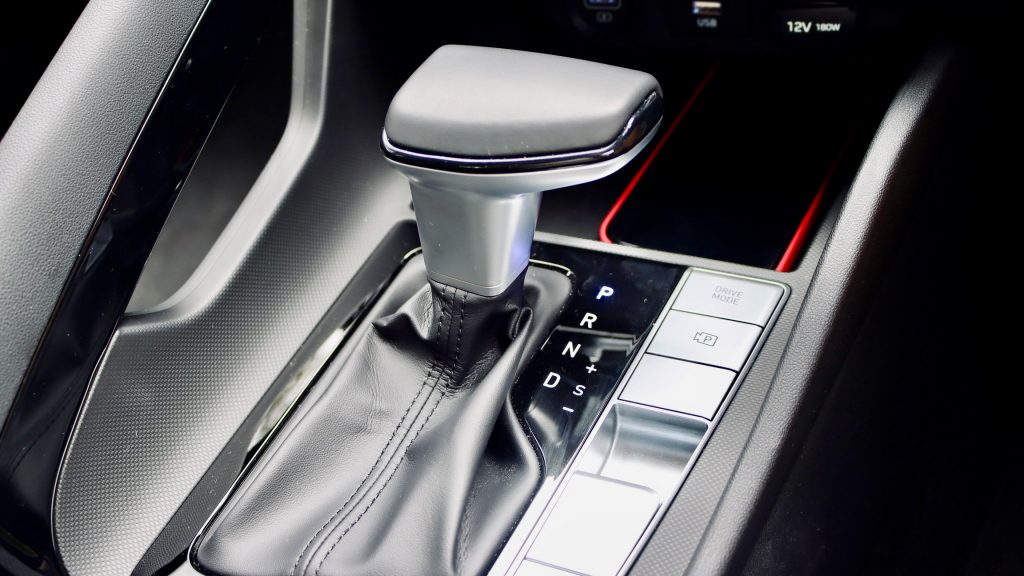
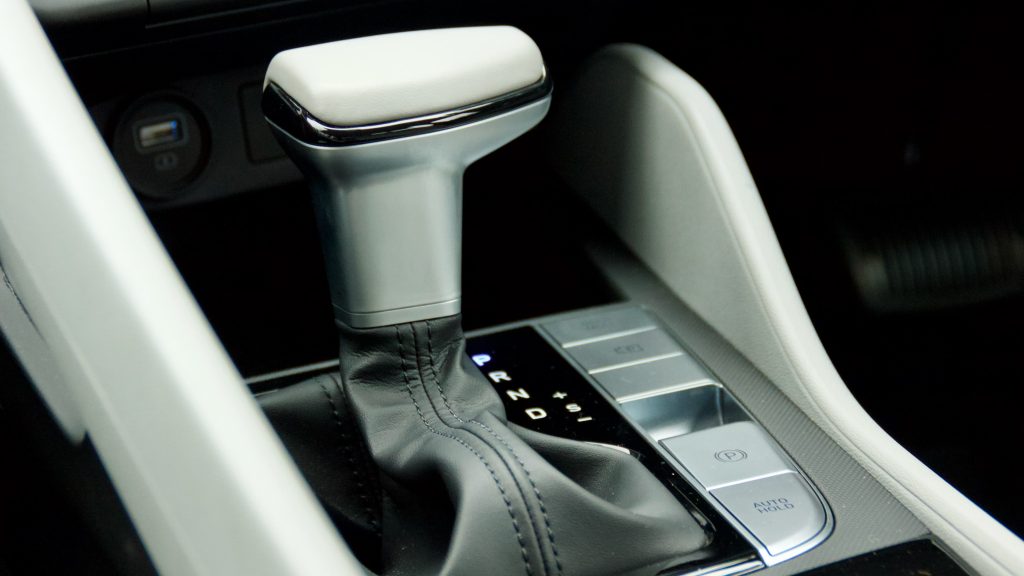
Main rivals to the 2021 Hyundai i30 Sedan are the Mazda 3 sedan and Toyota Corolla sedan. The Mazda 3 has the option of either 114kW/200Nm 2.0-litre or 139kW/252Nm 2.5-litre four-cylinder engines. The Toyota Corolla sedan has the option of either a petrol engine which is a 2.0-litre four cylinder that produces 125kW of power and 200Nm of torque or a hybrid system which is a 1.8-litre petrol engine combined with an electric motor producing 90kW of power.
The claimed average fuel consumption of the 2021 Hyundai i30 Sedan fitted with either the manual or automatic transmission is 7.0L/100km. Thanks to the newer engine used in the sedan, that is actually less than the i30 hatchback’s claimed average of 7.4L/100km. With our time behind the wheel of the i30 sedans, we saw an average fuel consumption of 9.0L/100km. A Mazda 3 fitted with the 2.0-litre engine has an average fuel consumption rating of 6.1L/100km for the auto and 6.3L/100km for the manual, which is less than the i30, though similar in the real world.
Ride & Handling: 8/10
The 2021 Hyundai i30 Sedan’s suspension is specially tuned for our roads and Hyundai has historically been very good with the Australian-tuned suspension. Thankfully, the i30 Sedan is no exception as even while riding on 17-inch wheels, the i30 sedan handles bumps and potholes rather well. There is very little disruption in the driving nature of the i30 when going over even bigger undulations in the road, which is more than can be said for the Mazda 3 and its 18-inch wheels that give a firm ride.
Surprisingly with a ride on the softer side, the 2021 Hyundai i30 Sedan actually handles rather well. The chassis is pretty good giving a good mix of decent dynamic capability and a good ride quality. When cornering in the i30 sedan there slight body roll, but not too much. Unfortunately the i30 sedan is in the same market as the Toyota Corolla and the Mazda 3, which is a problem for the i30 as the Mazda handles beautifully and the Corolla’s dynamic improvement was significantly with the latest car. The i30 can hold its own though, especially as an N Line.
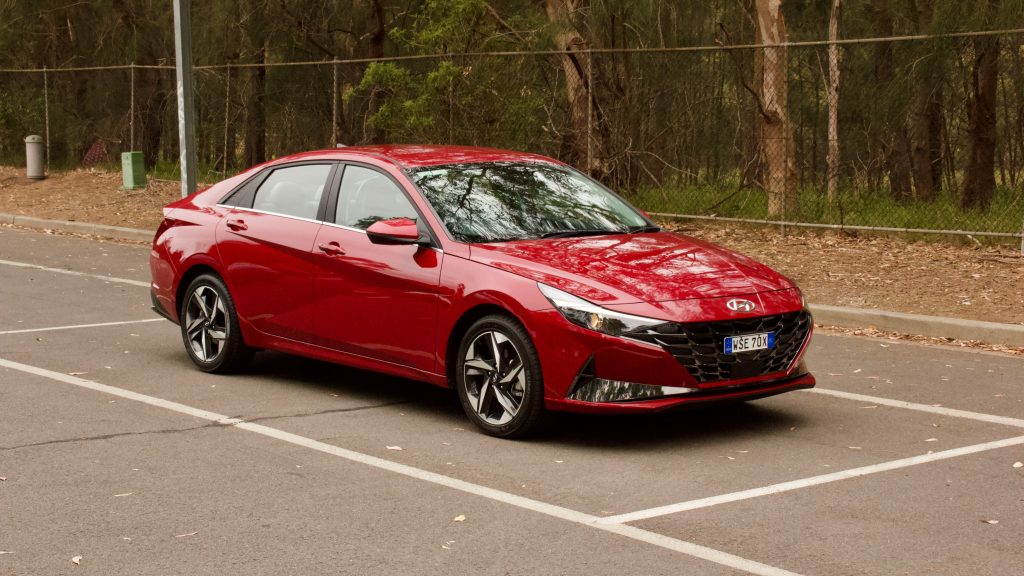
The active safety features on the 2021 Hyundai i30 Sedan work well. The only thing we would improve upon is the lane departure warning system, which can be a little over-sensitive at times. Visibility is a touch lacking thanks to the curvaceous body of the car and road noise levels are annoyingly high.
Interior & Practicality: 7/10
The interior in the 2021 Hyundai i30 Sedan is very different than the one in the i30 hatch because it’s a much newer car – a new generation of i30 hatch will be here within a few years. Much like the exterior, the interior of the i30 Sedan has a very interesting design to it – the i30 hatchback’s interior is much more conventional in its layout. Unlike the relatively two dimensional dash on the i30 hatch, the i30 sedans dash is more three dimensional – for example, the grab handle on the passenger side of the centre console.
2021 Hyundai i30 Sedan Active Interior 2021 Hyundai i30 Sedan Elite Interior
The interior quality is also remarkably opposite to the i30 hatch. While the i30 hatch has a relatively good quality cabin, the sedan does not. Wherever you look there is hard scratchy plastics and while the leather quality is good, the cabin could offer better quality. The door panels, dashboard and centre console are all covered in hard plastics in the i30 sedan and the only soft touch portion in the interior is a small portion on the front door panels which is covered in a cloth.
There is a good amount of interior storage in the 2021 Hyundai i30 Sedan though. It is also clever storage – for example, the wireless charging tray is tucked in front of the gear selector with enough space to store both your phone and wallet. There are also two USB-A ports in this little cubby to charge more than one device. There are also two cup holders behind the gear stick which have a false bottom with capacity for both tall and short cups. Underneath the centre console on the passenger side there is a little cubby and the usual glove box, centre console storage and door bins.
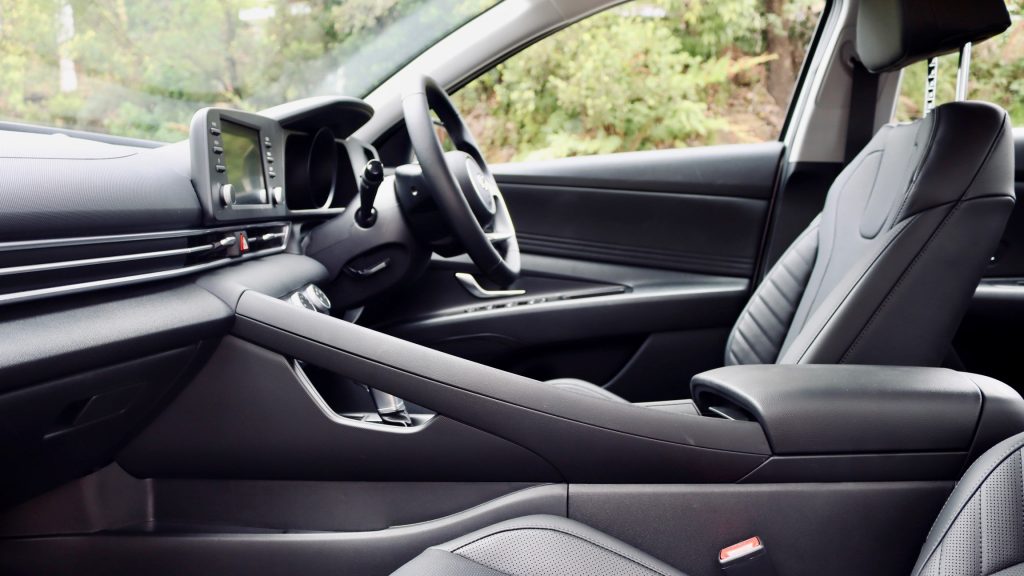
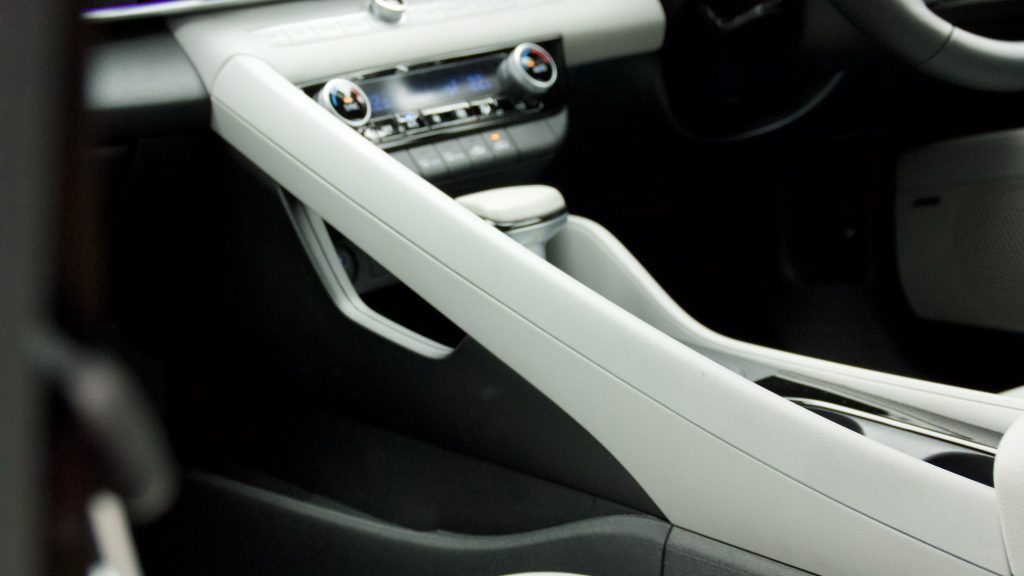
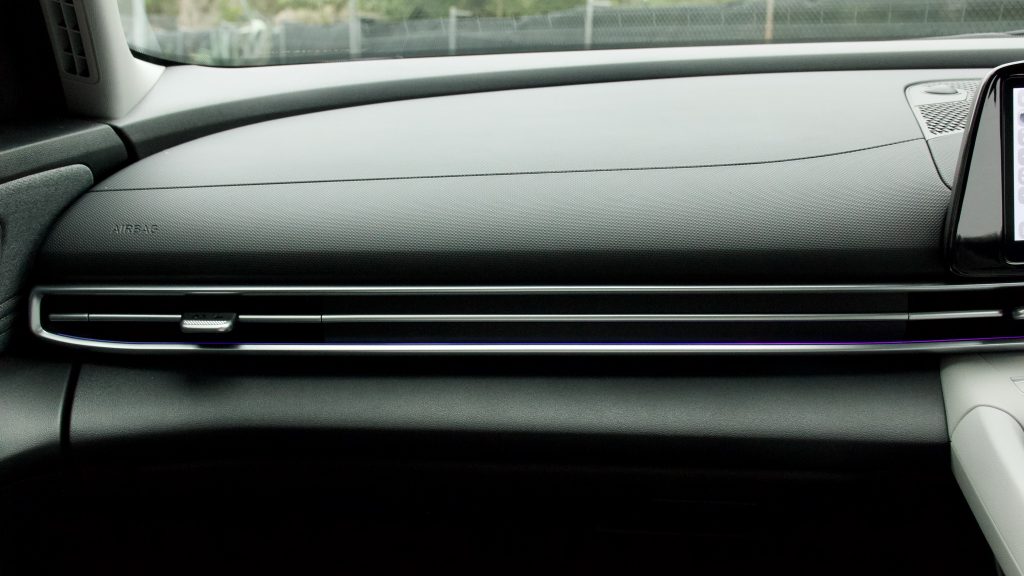
The base i30 Active gets a smaller 8.0-inch touchscreen. Having this screen means under the screen is a hard plastic portion of the dash which looks and feels a little cheap. The screen itself is fantastic though – it is easy to navigate and the wireless Apple CarPlay and Android Auto are a nice touch. The Elite variant increases the screen size to 10.25-inches, which oddly removes the wireless smartphone mirroring for a more conventional wired setup.
2021 Hyundai i30 Sedan Active 8.0-inch screen 2021 Hyundai i30 Sedan Elite 10.25-inch screen
The rear seat room in the i30 sedan is generous with plenty of leg and knee room, but taller passengers could feel the stylish low-slung roof encroaching on them a little bit. There is a centre armrest with cupholders in them to make the rear seats more comfortable and air vents, though no form of charging port to be seen. It is worth noting the Mazda 3 in base form (G20 Pure) does not have rear air vents but every model above it includes them.
The 2021 Hyundai i30 sedan can swallow 474-litres of cargo space with the rear seats in place. There are pull tabs in the boot to fold the seats down and further increase the cargo capacity. In comparison the Mazda 3 sedan can carry a lesser 444L of cargo and the Toyota Corolla sedan can carry a very similar 470L.
Specifications: i30 Active vs i30 Elite
| i30 Active | I30 Elite | |
| Steering wheel and gear knob | Leather | Leather |
| Handbrake | Electronic (auto only) | Electronic |
| Upholstery | Leather | Leather |
| Proximity key with push-button start | – | Standard |
| Auto-folding mirrors | – | Standard |
| Electric windows with automatic up/down | Driver’s auto down only | Driver’s auto down only |
| Air-conditioning | Manual | Automatic dual-zone climate control |
| Rear vents | Standard | Standard |
| Instrument cluster | Partially digital, 4.25-inches | Fully Digital, 10.25-inches |
| Infotainment touchscreen | 8.0-inches | 10.25-inches |
| Satelite navigation | – | Standard |
| Apple CarPlay | Standard (wireless) | Standard (wired) |
| Android Auto | Standard (wired) | Standard (wired) |
| DAB+ | – | Standard |
| Sound system | Unbranded with six speaker | Bose sound system with seven speakers |
| Wireless smartphone charging | Standard | Standard |
| Reversing camera | Standard | Standard |
| Reverse parking sensors | Standard | Standard |
| Front parking sensors | – | Standard |
| Tyre pressure monitoring | Standard | Standard |
| Automatic headlights | Standard | Standard |
| Automatic wipers | – | Standard |
| LED daytime running lights | Standard | Standard |
| LED front indicators | – | – |
| LED headlights | – | – |
| LED rear combination lights | – | – |
| Airbags | Six | Six |
| Blind-spot warning | – | Standard |
| Rear cross-traffic alert | – | Standard |
| Safe exit warning | – | Standard |
| Driver Attention Warning | Standard | Standard |
| Auto emergency braking (AEB) | Standard | Standard |
| Automatic high beam | – | – |
| Lane keep assist | Standard | Standard |
| Lane follow assist | Standard | Standard |
| Reversing camera | Standard | Standard |
Service & Warranty: 8.0/10
The 2021 Hyundai i30 Sedan comes with the brand’s five-year unlimited kilometre warranty, which is the same length of warranty seen on the Mazda 3 and Toyota Corolla. The i30 Sedan comes with 12 months of roadside assist as standard, but this is extended by a further 12-months at every scheduled service for up to five years in total. The Mazda 3 comes with five years of roadside assist from purchase, although the Toyota Corolla Sedan does not come with any form at all.
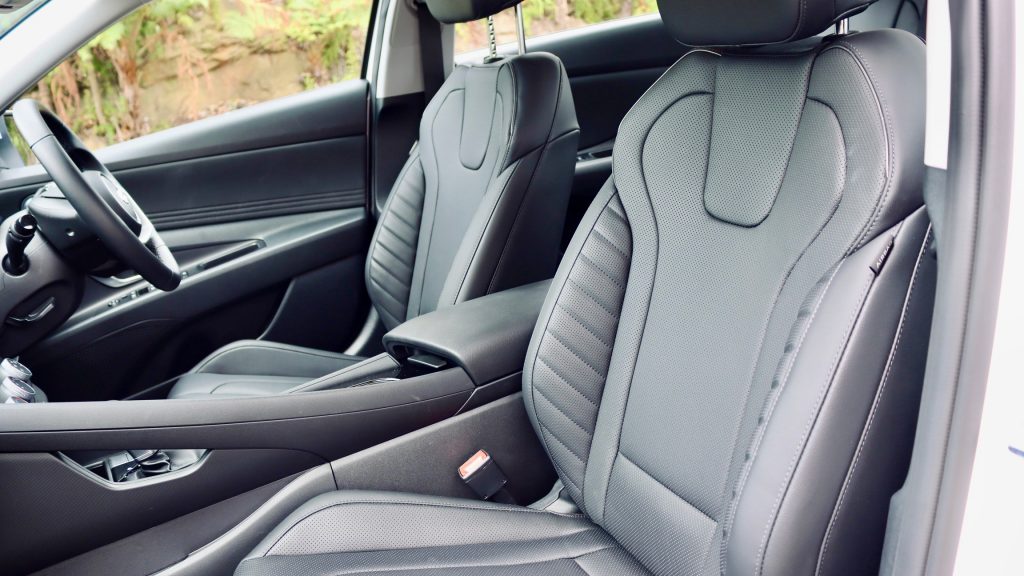
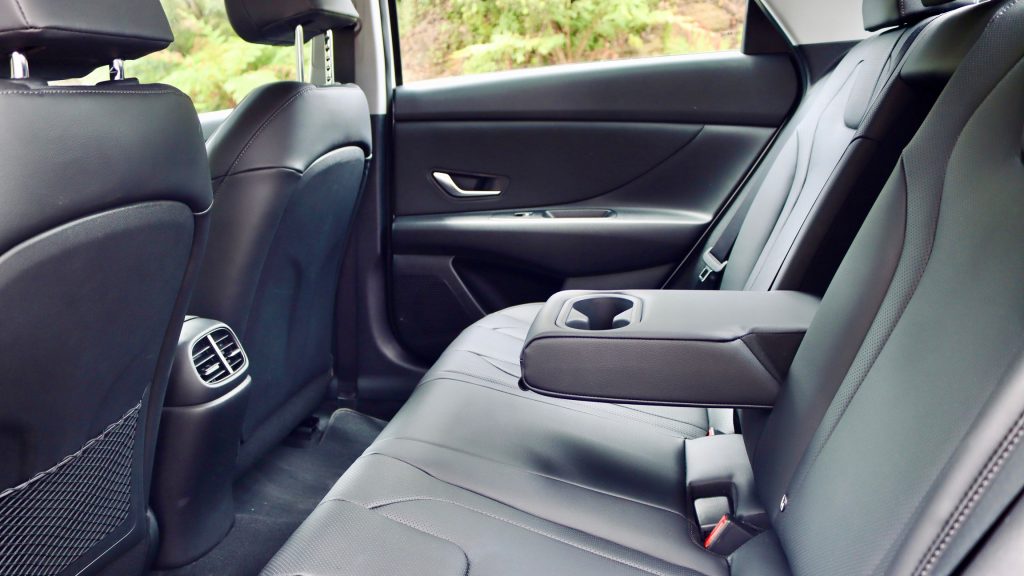
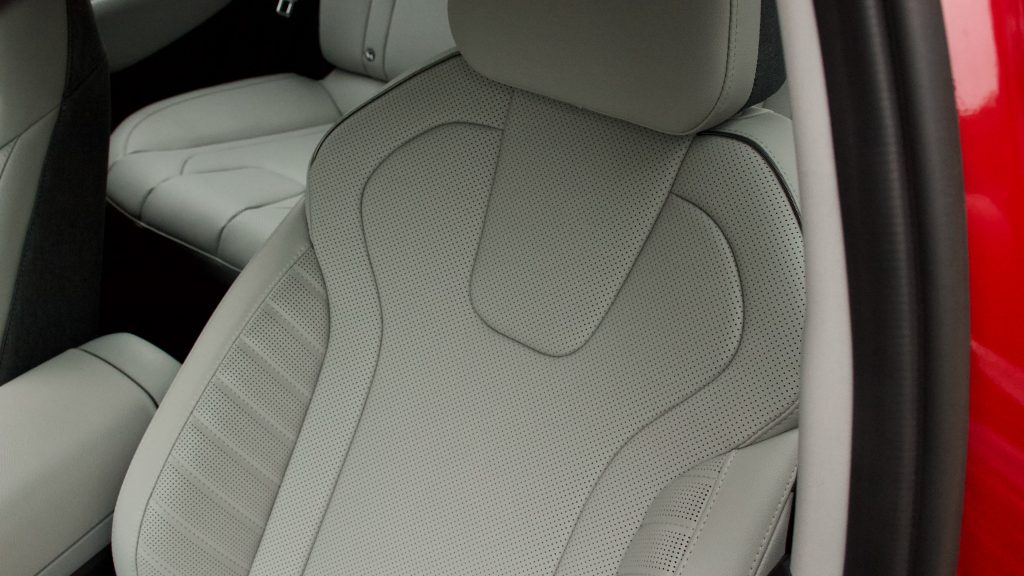
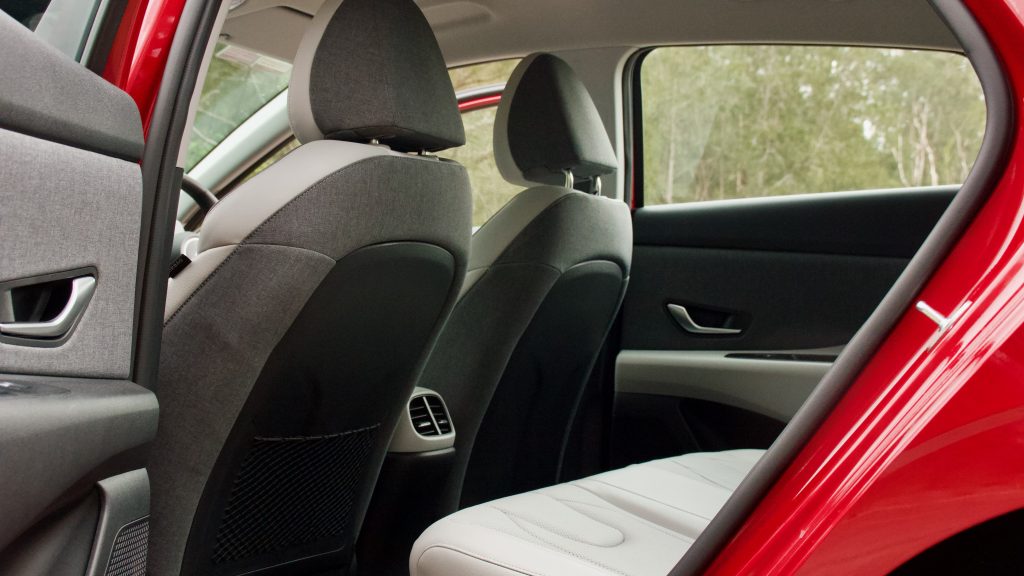
12-months or 15,000km is how often the Hyundai i30 Sedan requires servicing, which is the same interval Toyota ask that the Corolla gets serviced as well. The Mazda 3 sedan needs servicing more often at 12 months or every 10,000km. Servicing the i30 Sedan over five-years or 75,000km will set owners back $1,495 ($299 per service). Servicing the Toyota Corolla Sedan over the same period will cost just $1,025 ($205) and the Mazda 3 will set you back $1,670 over five years or 50,000km ($334 per service).
2021 Hyundai i30 Sedan DiscoverAuto Rating: 7.4/10
The Hyundai i30 Sedan brings style and an interesting design to a relatively quiet part of the market. It also offers a good driving experience and a good amount of technology. Unfortunately, letting the i30 Sedan down is a rather plastic-filled interior and an only fine powertrain. The Mazda 3 Sedan has a much better quality interior and the engine is more engaging.
It is worth noting through that the i30 Sedan does have a place in the sedan market as it has a big boot, practical interior, is decently cheap to service and it looks great. With better value than the i30 hatchback, the i30 sedan is an interesting and compelling option in the small car segment that deserves your attention.
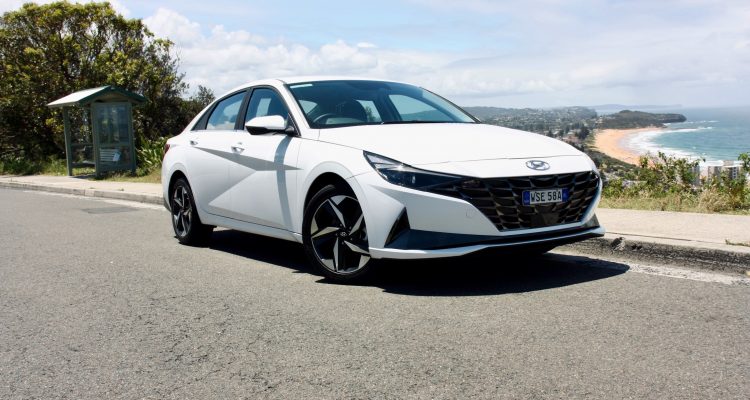
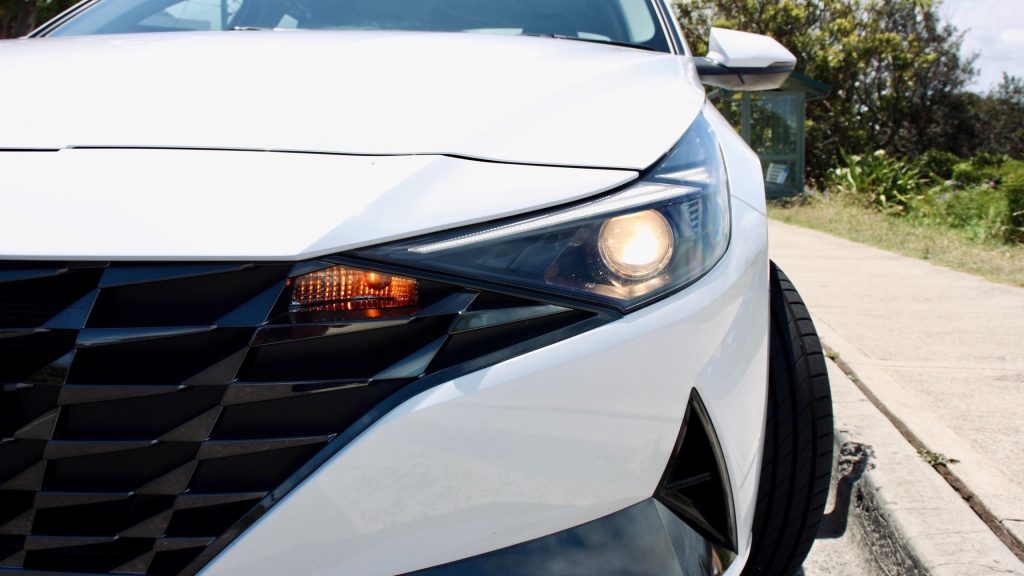
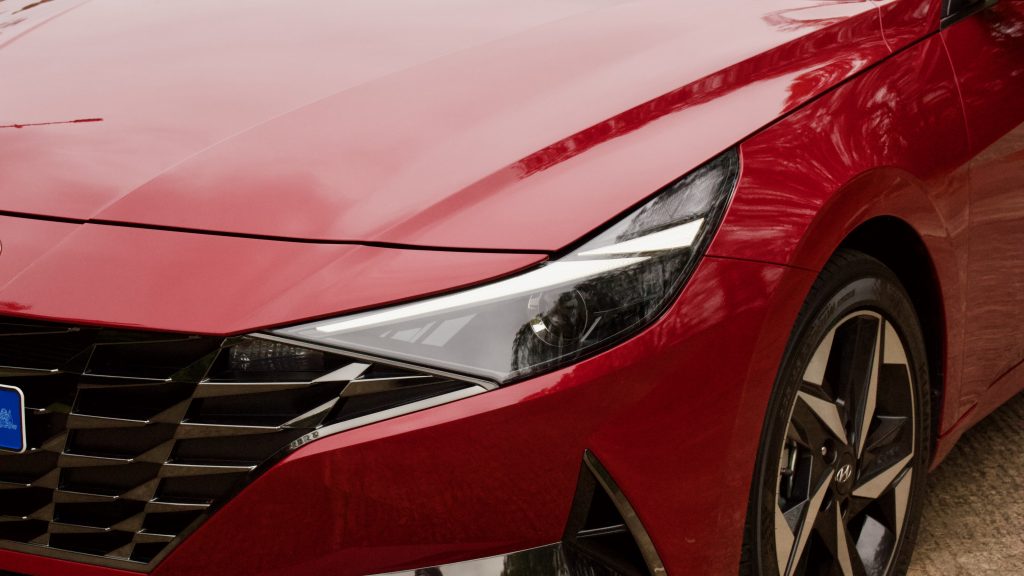
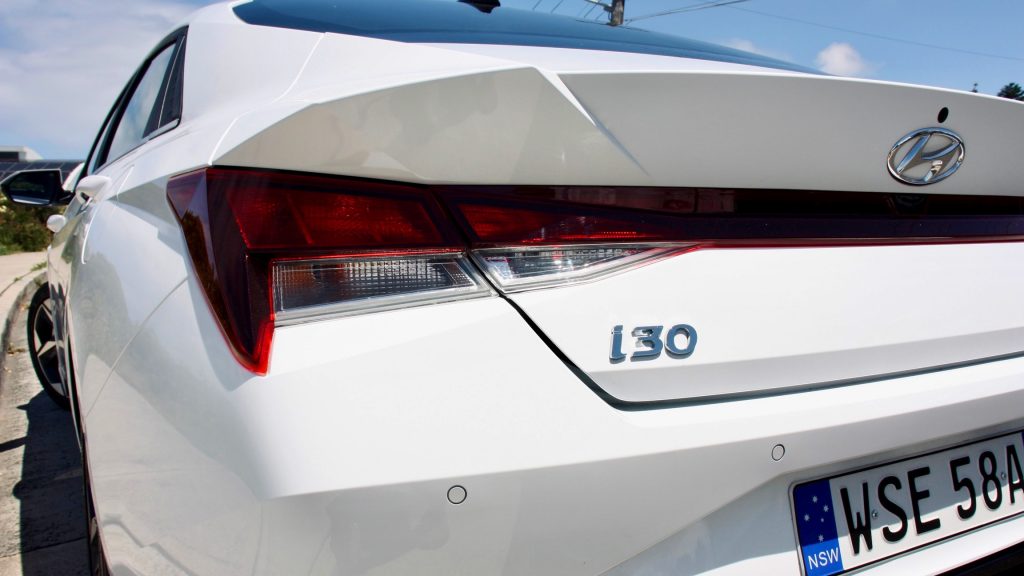
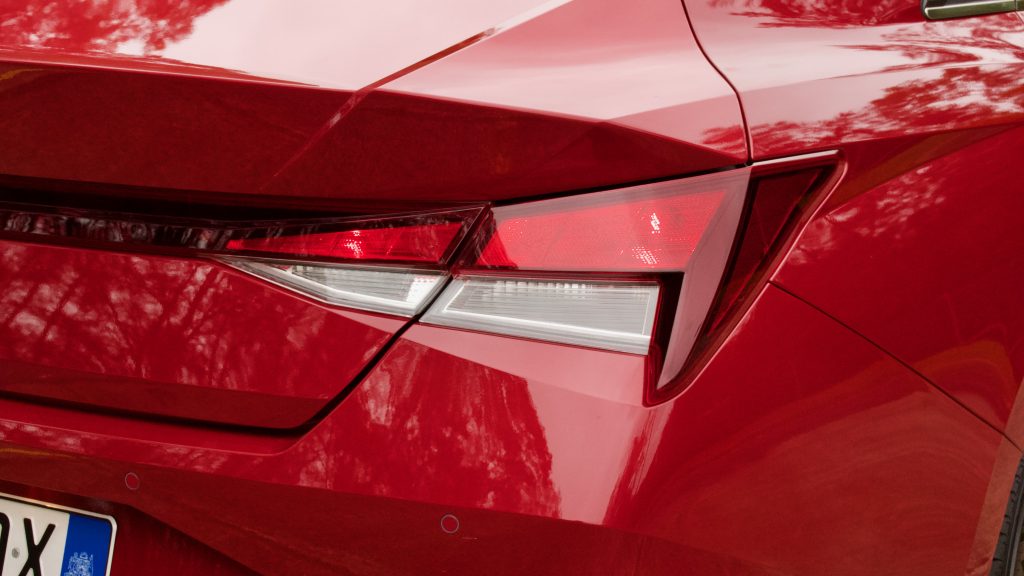
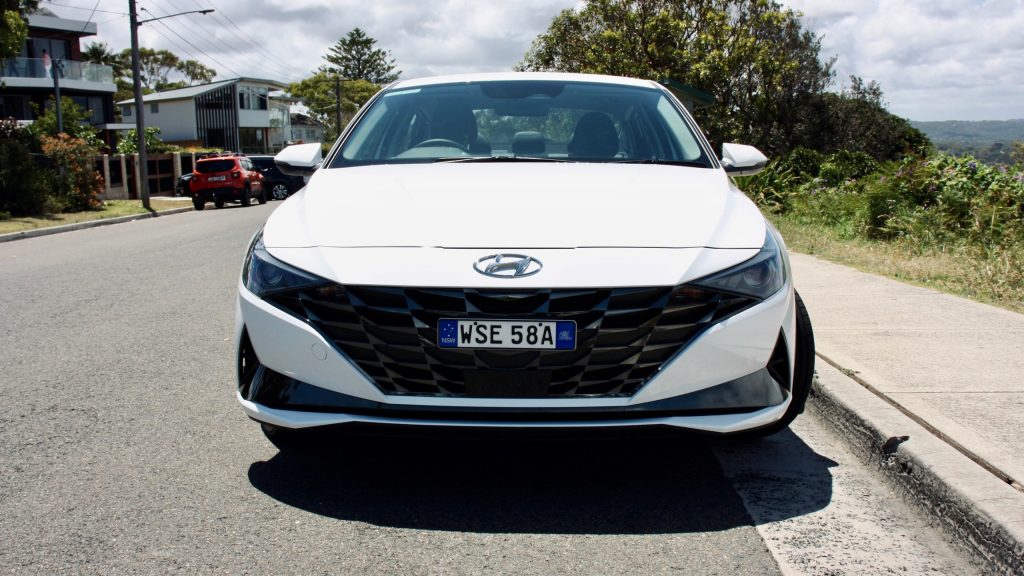
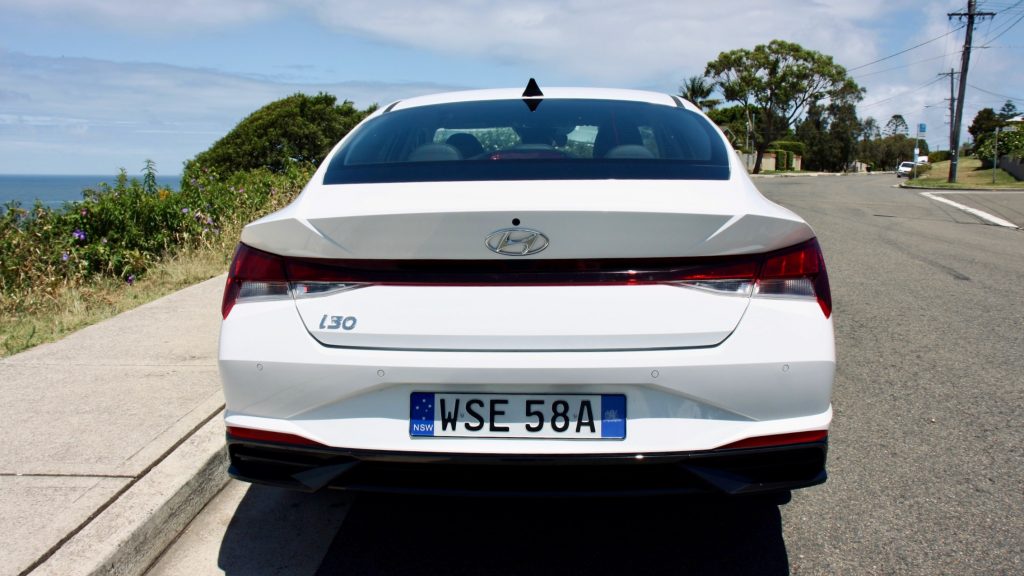
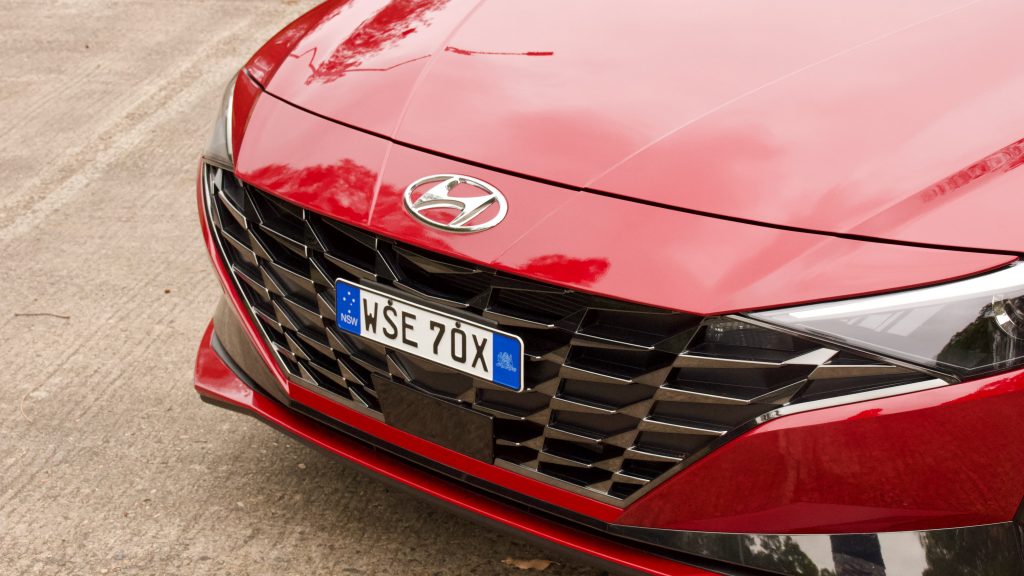
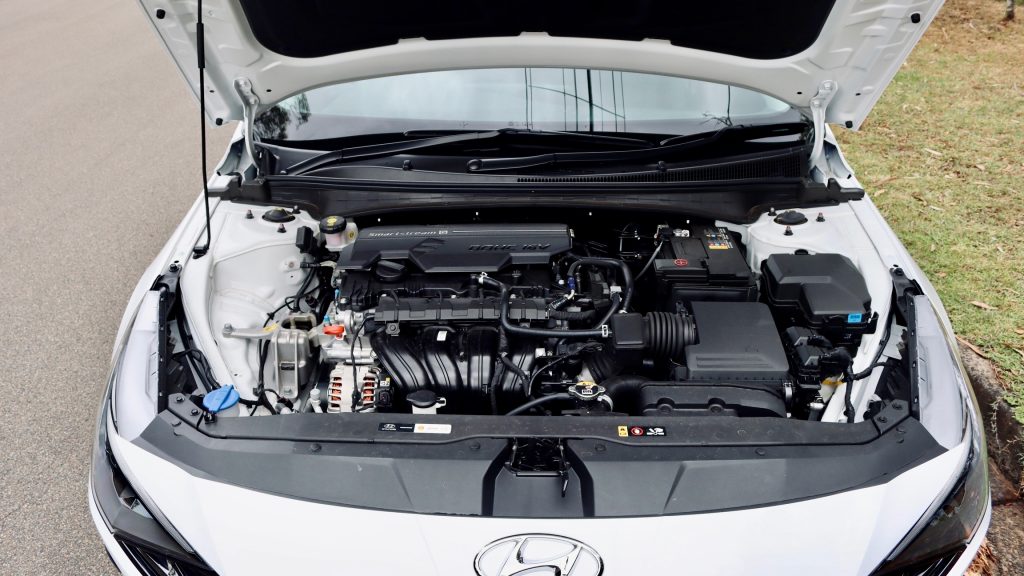
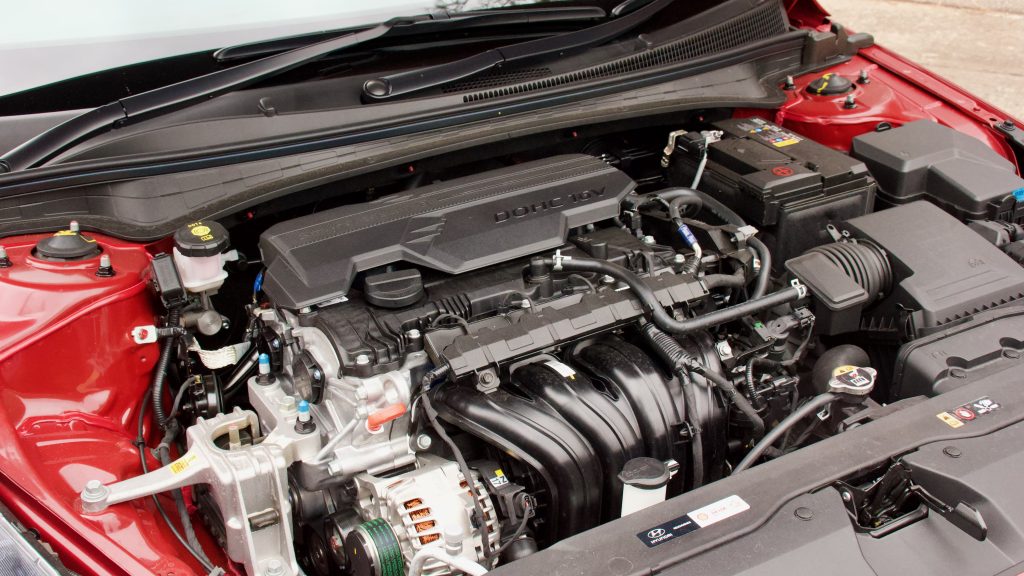
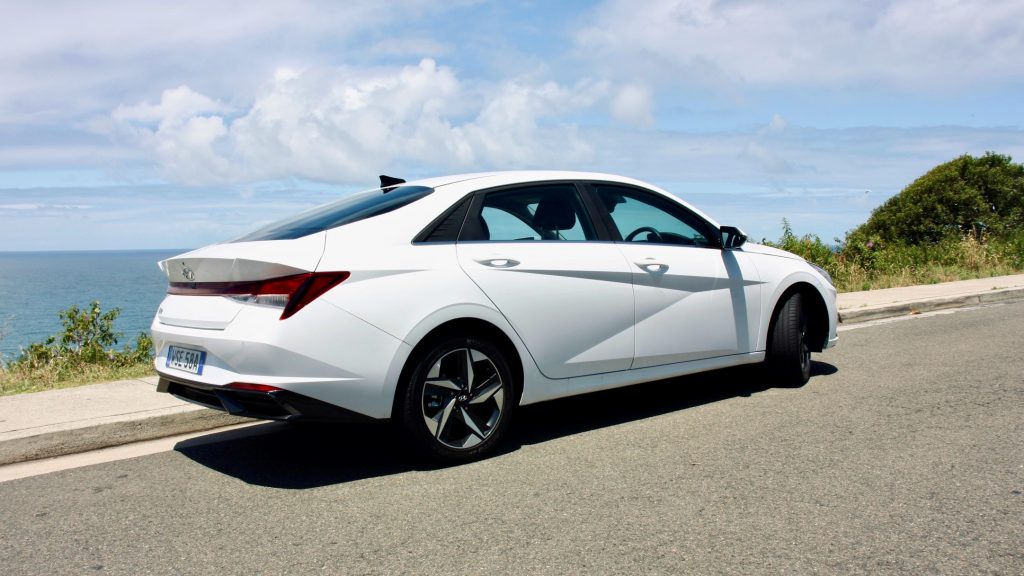
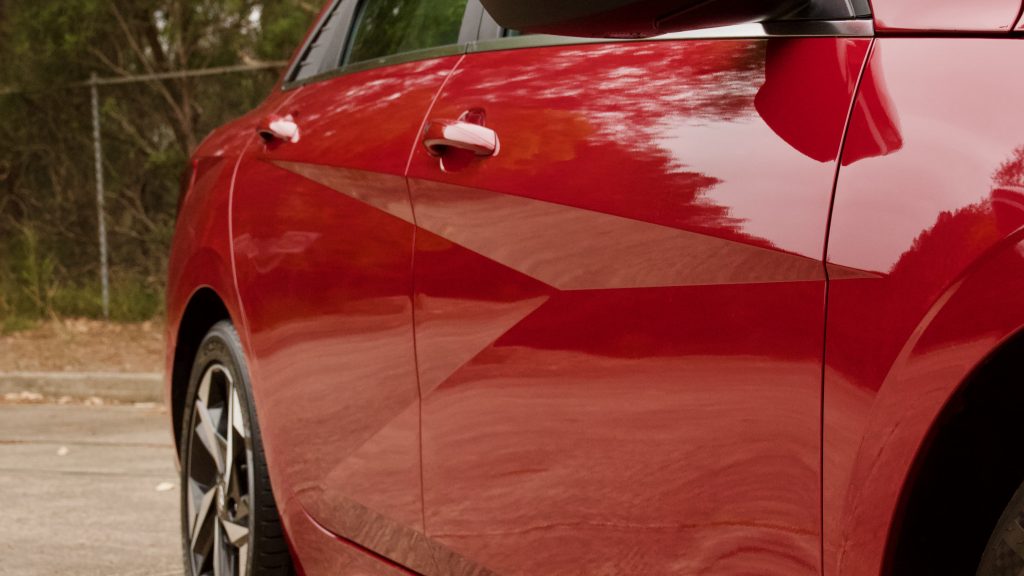
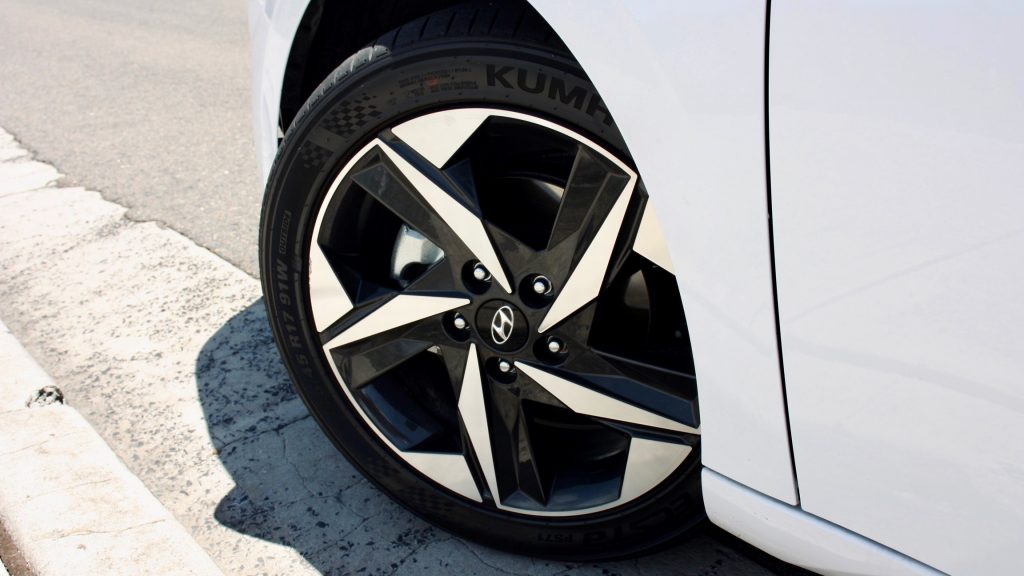
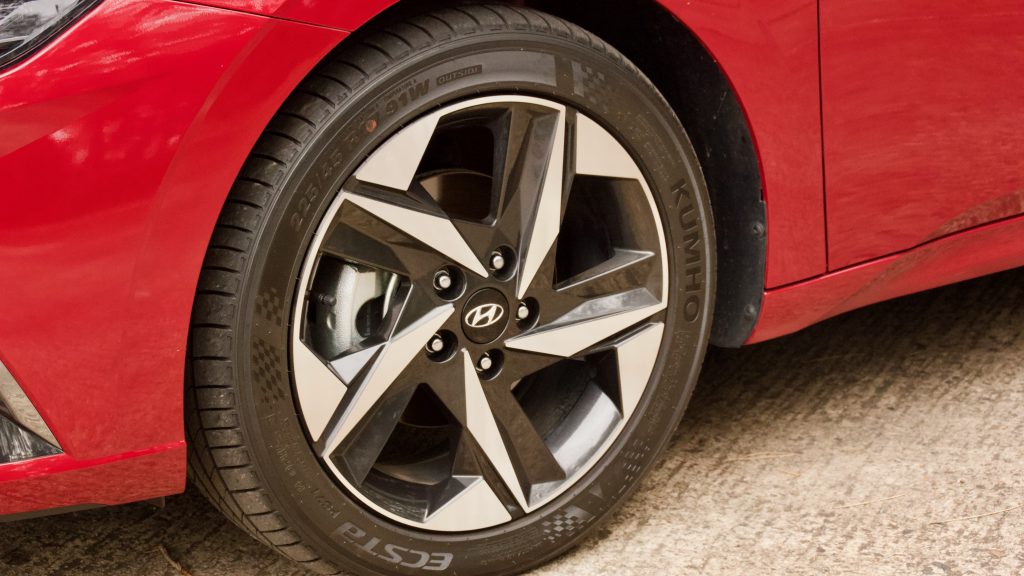
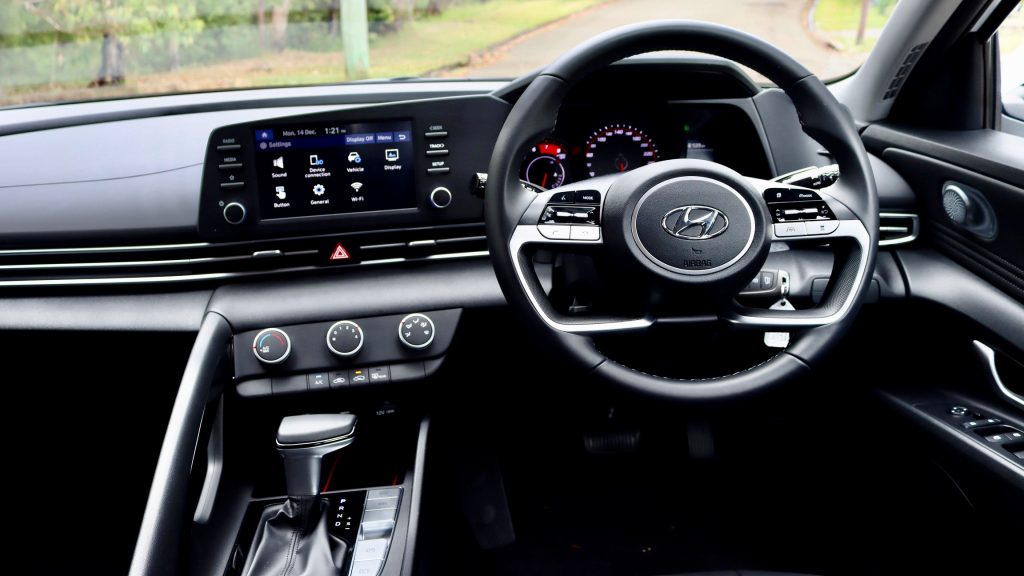
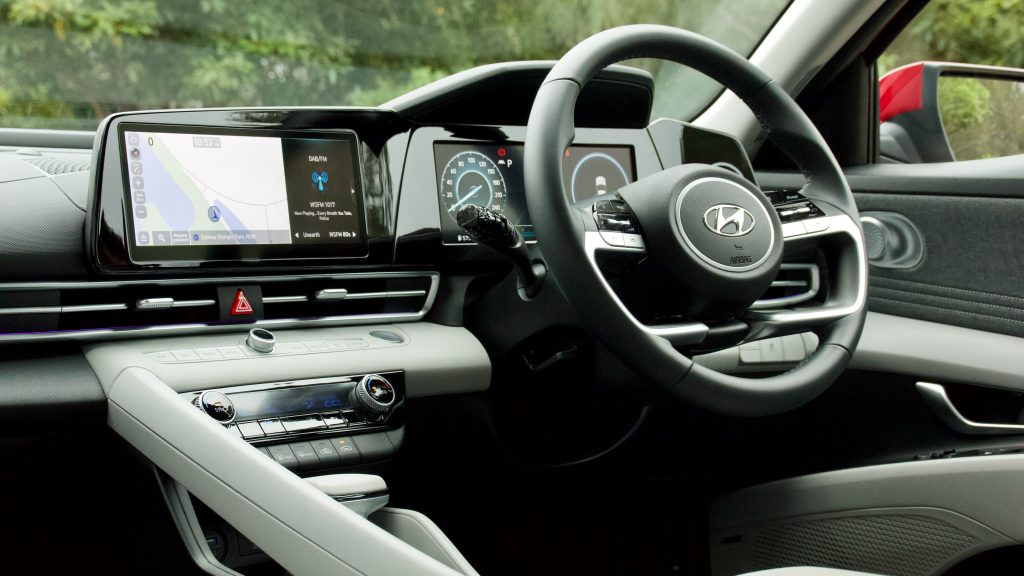
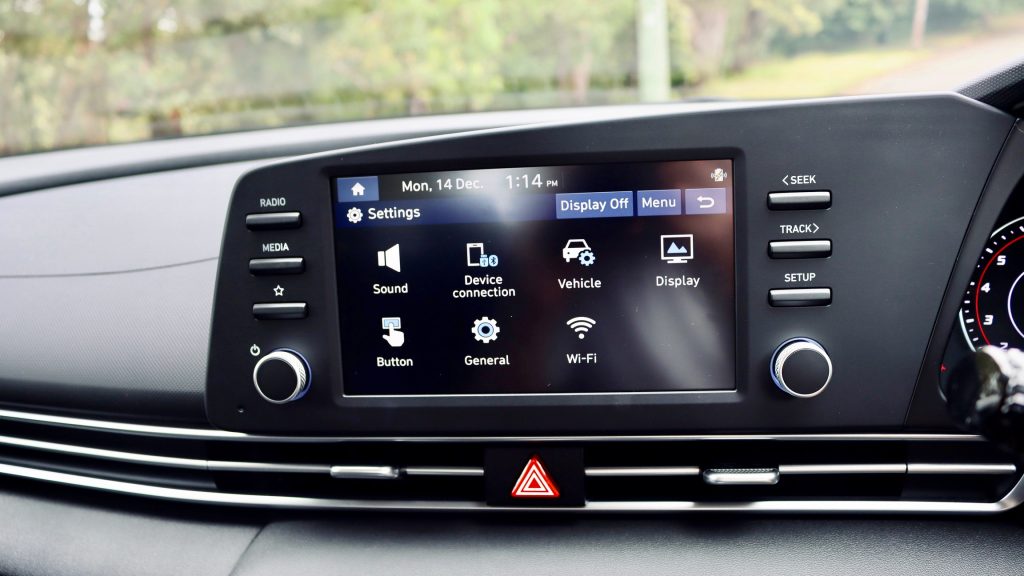
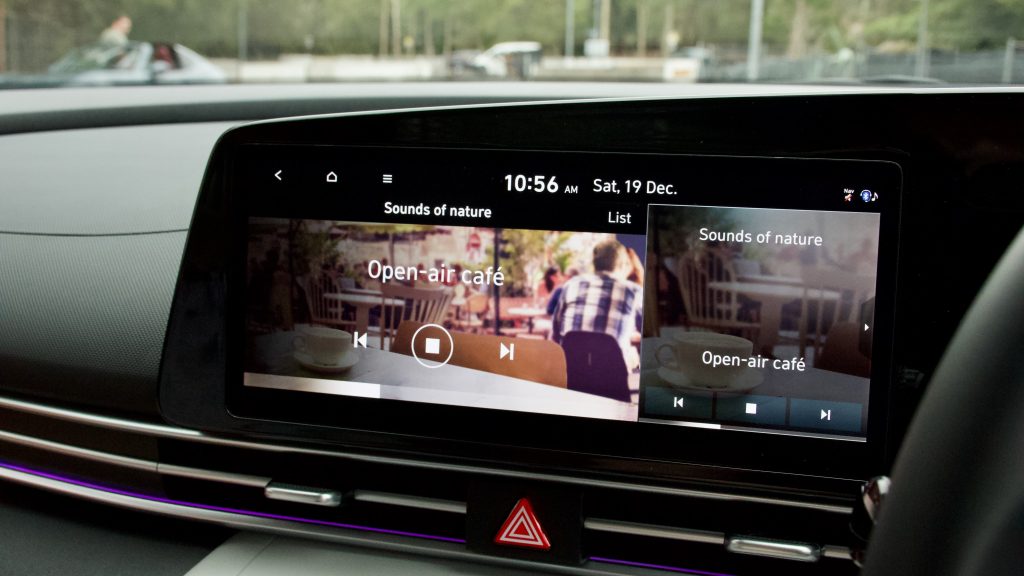
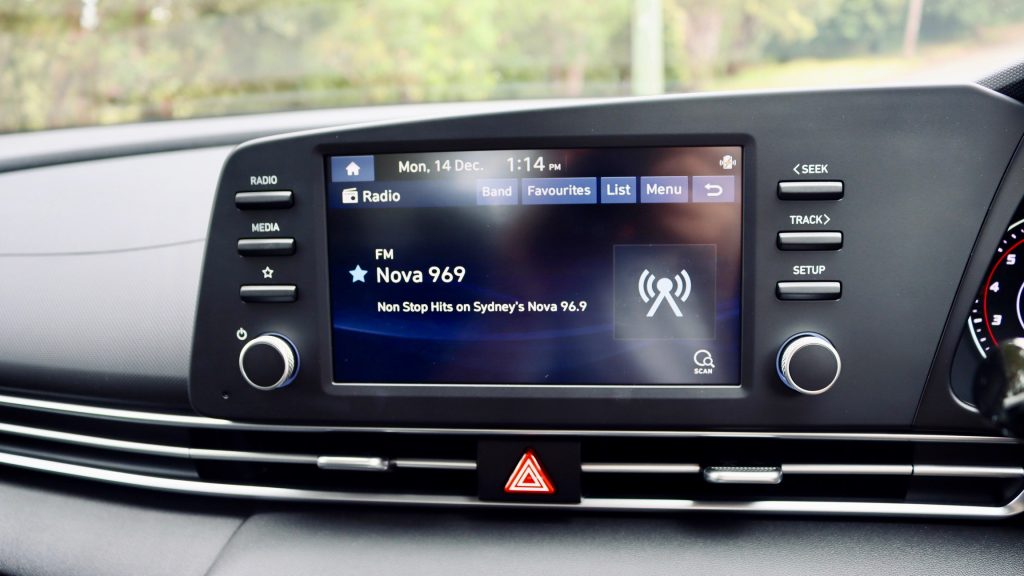
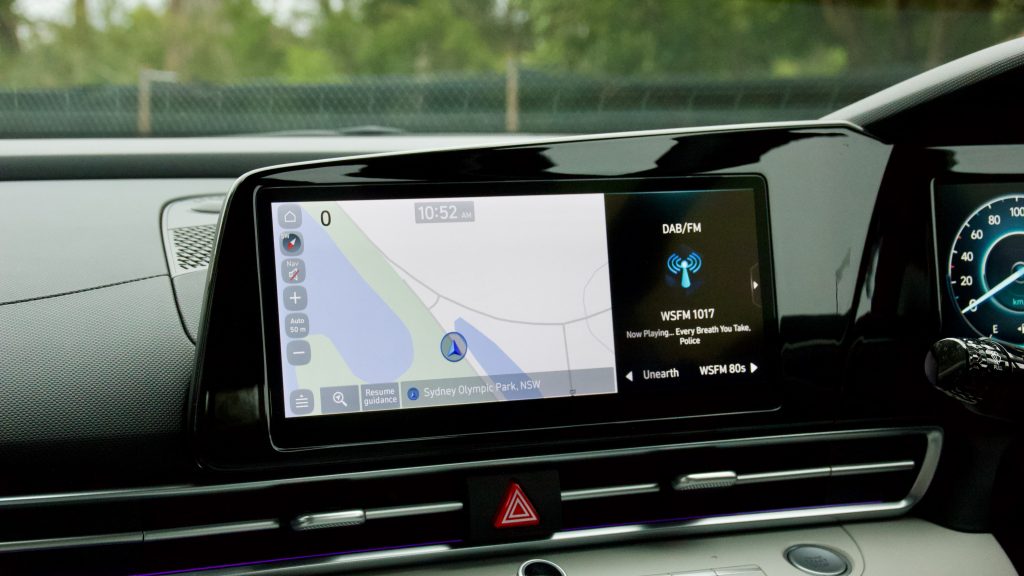
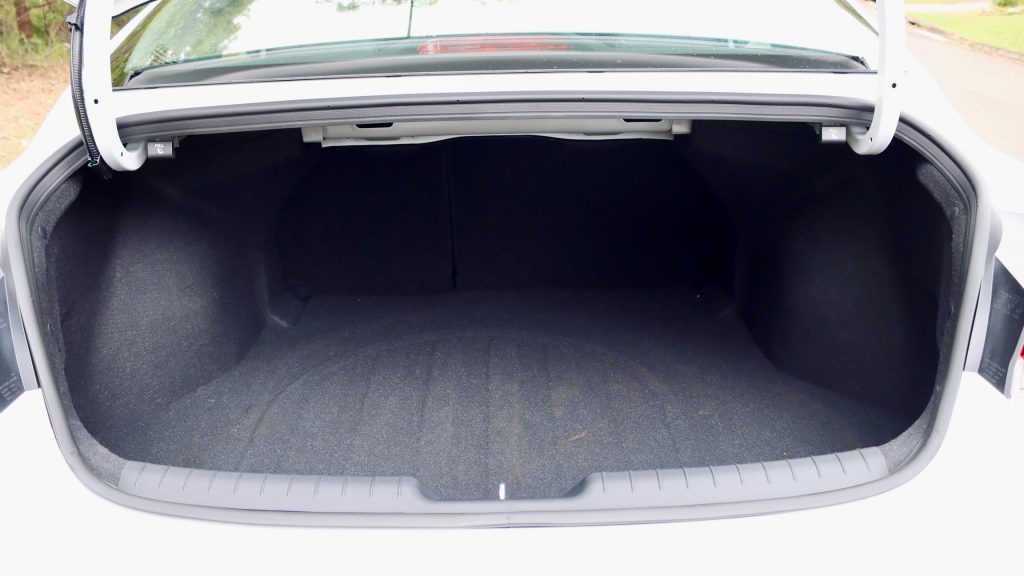
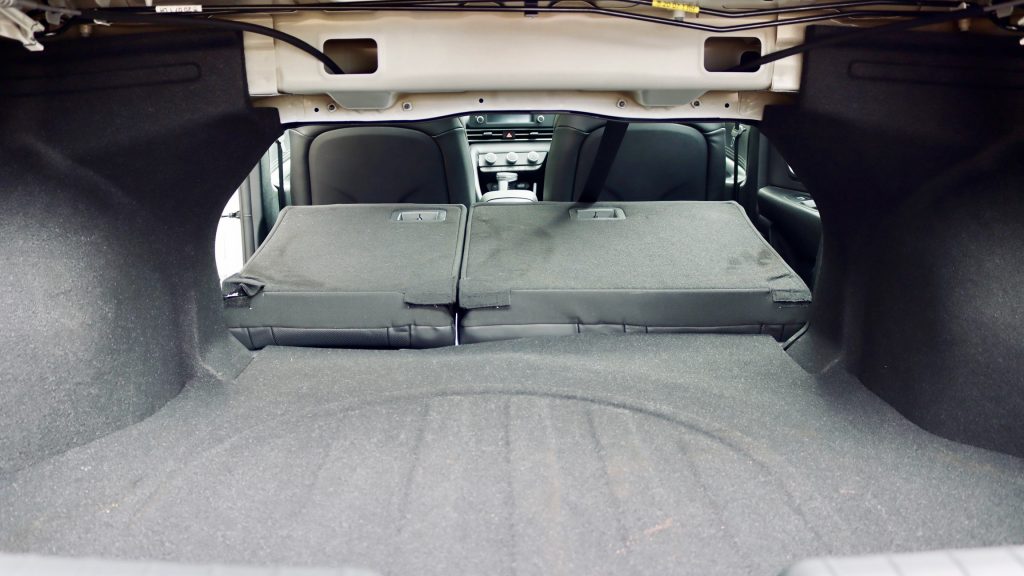
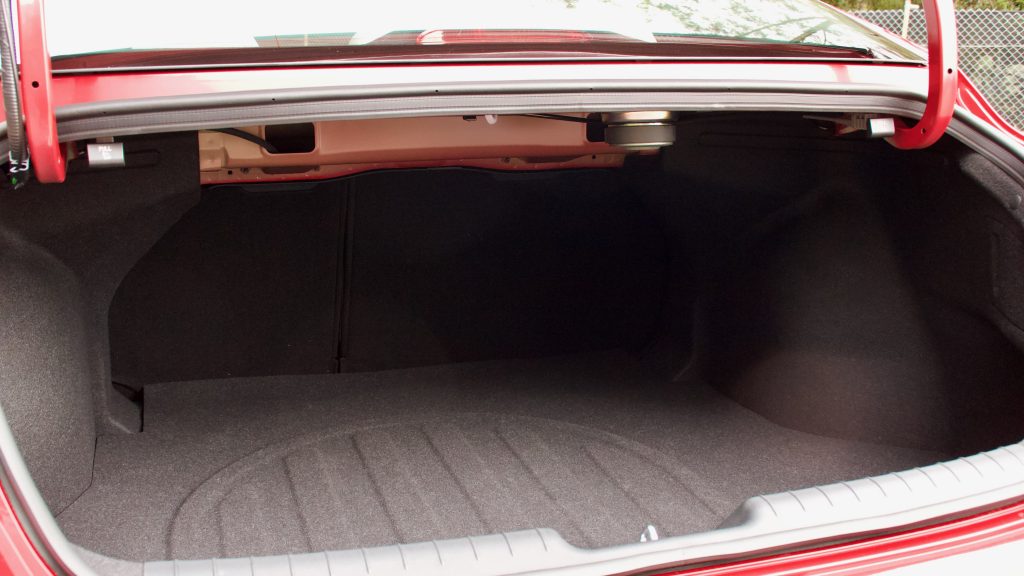
I own an elite model. The dash layout is better than the Mazda 3 or Corolla. It feels better and looks the part. The dash on top has soft plastic so do the armrests. The Bose 7.1 sound system beats the Mazda 3 and Corolla for the price. As well as having a full-size spare alloy wheel. One major advantage in rural areas. Especially when you drive past a Corolla or Mazda 3 on the side of the road with a wheel off the car and left for vandals to destroy while you are off trying to get a new tyre.